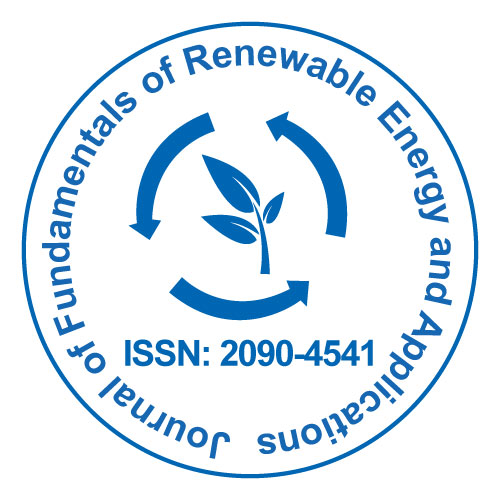
Journal of Fundamentals of Renewable Energy and Applications
Open Access
ISSN: 2090-4541

ISSN: 2090-4541
Diana S�?¡nchez-Herrera1, Liliana Alzate-Gaviria2, Odil�?³n S�?¡nchez-S�?¡nchez3, Elena Rustrian-Portilla3 and Eric Houbron-Pascal3
1Universidad Veracruzana, M�?©xico 2Centro de Investigaci�?³n Cient�?fica de Yucat�?¡n A.C. (CICY), M�?©xico 3Universidad Veracruzana, M�?©xico
Scientific Tracks Abstracts: J Fundam Renewable Energy Appl
The global energy demand has been increasing over the years mainly by the exponential growing of the worldwide population and their technological demands. With these demands we must take into consideration that their resolution through the use of fossil fuels as the main source of energy has several repercussions not only for the environment but for ourselves. Thus, many alternative energies have been proposed as a possible solution with the distinctive plus of been environmental friendly. One of the main concerns in this matter is the selected source for developing the desired green energy. The current utilization of grains like Sorghum, corn, soya or other seeds rich on oil or sugars have as a main disadvantage the utilization of food services which are necessary to the common good. On this matter, we want to discuss the application of lignocellulosic residues as a green source for the generation of biogas. It is considered that the lignocellulosic residues are the most abundant, widely distributed and less currently use in other type of activities coming to generate up to 200 billion tons per year. These key characteristics make them a suitable candidate for the generation of an inexpensive alternative energy as the biogas. In this conference we will make an approach of the main characteristics of these residues, its structural complexity and the main treatment technologies to overcome that complexity in order to increase the biogas yields.
Diana Sánchez-Herrera from México received her Bsc in Biology from the Universidad Veracruzana and holds an MSc degree in Renewable Energy from the CICY research center (2009-2011). She was working with the development of a microbial fuel cell for the generation of bioelectricity with synthetic waste water, evaluating the system by electrochemical analysis (CV, EIS) and the characterization of the biofilm an anolyte developed in the anode in different stages of the bio electrochemical system. Currently she is a PhD student in the multidisciplinary program of Tropical Ecology at the CITRO research center belonging to the Universidad Veracruzana in Mexico. Her PhD research topic focuses on the evaluation of the methane generation potential of the sugarcane straw, by the implementation of liquid hot water and enzymes as pretreatment of this biomass. This agricultural waste has no current use and represents a harmful residue to the environment due to the traditional practice of its burning on the fields. She already published one scientific paper awhile other research activities were under review.
Email: prosatirik2@gmail.com